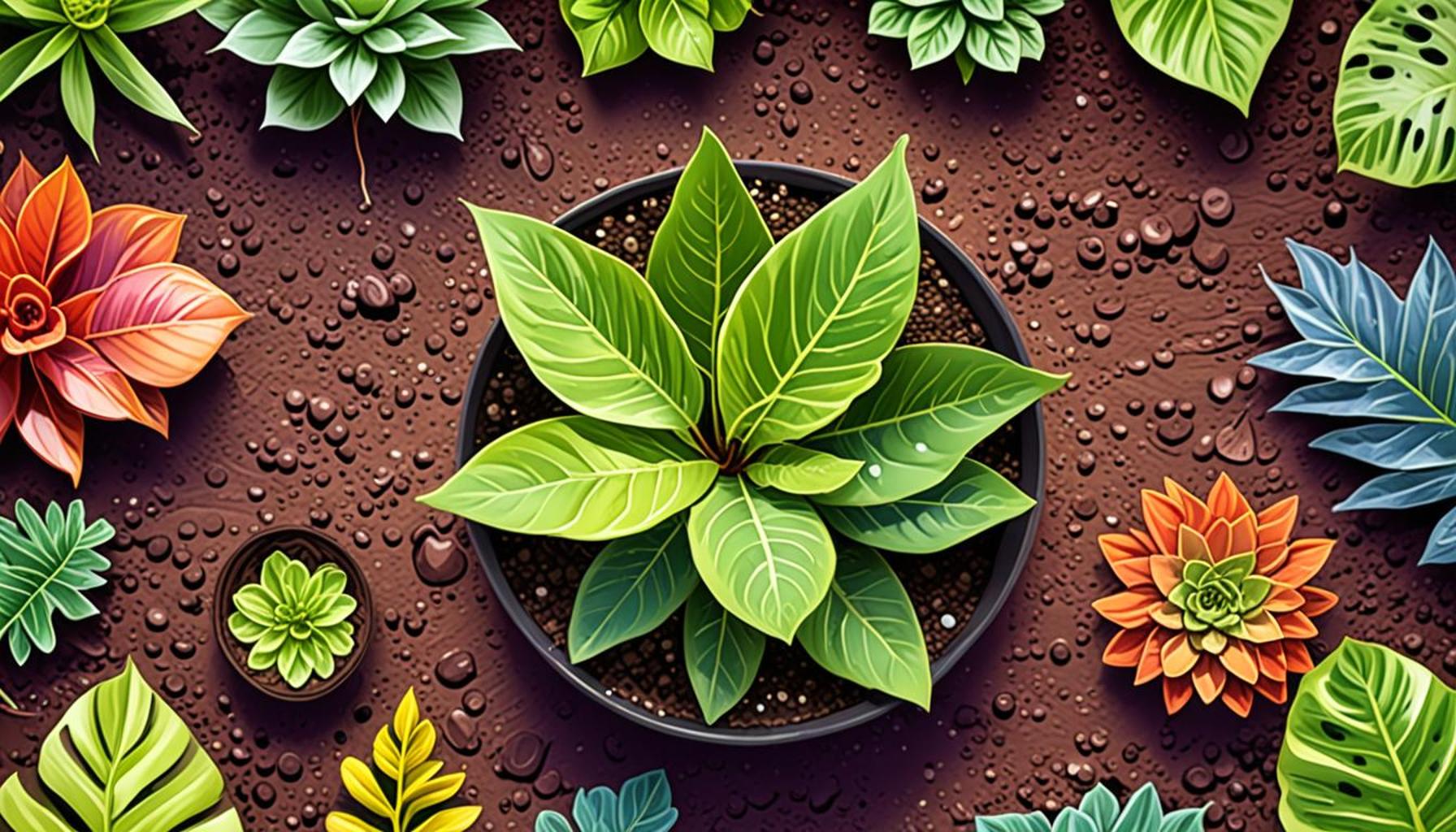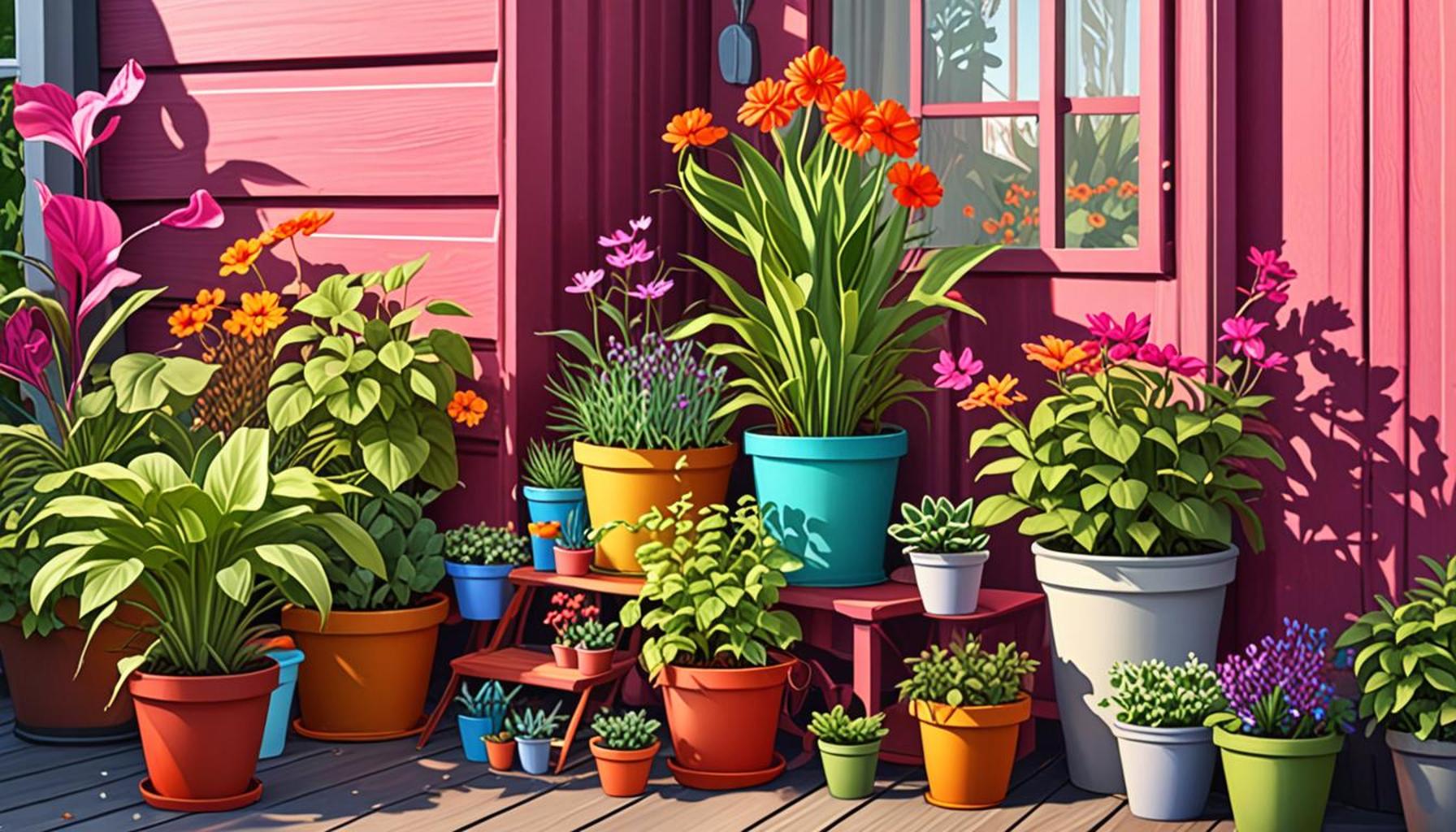Understanding Plant Hardiness Zones for Optimal Plant Selection

Understanding Plant Hardiness Zones
Choosing the right plants for your garden can often feel overwhelming. However, understanding plant hardiness zones provides a valuable foundation for making informed decisions about your landscape. These zones are essential in determining which plants are likely to thrive in various climates across the United States.
The United States Department of Agriculture (USDA) has categorized the country into distinct hardiness zones based on climate conditions. The USDA Plant Hardiness Zone Map divides the U.S. into 13 zones, each of which reflects a different level of temperature tolerance among plants. Each zone corresponds to the minimum average annual temperature. This categorization is particularly important for gardeners as it serves as a reliable guide when considering plant choices.
Key Climate Factors Influencing Zone Designation
Several factors influence the classification of these hardiness zones:
- Minimum winter temperatures – This is crucial for plant survival during cold months. For example, plants labeled for Zone 3 can endure winter lows as low as -40°F, while Zone 9 plants can withstand minimums of 20°F.
- Average growing season – Each zone indicates how long a gardener has to grow and harvest plants, allowing for better planning. A gardener in Zone 4 typically has a growing season of about 180 days, compared to about 240 days in Zone 9.
- Humidity levels – Humidity can significantly affect plant health, influencing growth patterns and susceptibility to diseases. For instance, moisture-retentive plants like ferns may flourish in the humid coastal zones, whereas succulents thrive in drier areas.
For instance, gardeners in regions like Zone 5, characterized by its colder climate, can cultivate hardy perennials such as coneflowers and daylilies, which are resilient to frost. In contrast, those inhabiting Zone 9 prefer heat-loving plants like hibiscus and citrus trees that thrive in warmer temperatures and prolonged sunlight.
The Impact of Choosing the Right Zone
Understanding your specific hardiness zone opens the door to a world of possibilities. This knowledge empowers gardeners to select suitable flowers, shrubs, and trees, enhancing the beauty and resilience of their outdoor spaces. For instance, native plants are often the most successful choice, as they are adapted to the climate and soil conditions of the specific zone, thus promoting biodiversity within local ecosystems.

Moreover, by considering your plant hardiness zone, you can avoid the disappointment of planting species that may struggle to survive or may require excessive maintenance. This approach reduces the need for intervention, such as frequent watering or the application of fertilizers, making your gardening endeavors more sustainable.
Dive deeper into the world of plant hardiness zones, and transform your gardening experience into one that thrives! By researching local resources or consulting with local gardening clubs, you can expand your knowledge further and discover which plants will not only survive but flourish beautifully in your specific region.
LEARN MORE: Click here to enhance your gardening skills
Essential Elements of Plant Hardiness Zones
To fully appreciate the significance of plant hardiness zones, it’s essential to delve into the core elements that contribute to their establishment. Each zone serves not only as a guide for what plants can survive but also as a framework for understanding the environmental conditions in which these plants thrive. By synthesizing information about temperature, microclimates, and other ecological factors, gardeners can make educated choices that lead to flourishing gardens.
Temperature and Its Role in Growth
The most defining characteristic of a hardiness zone is its minimum average annual temperature. This temperature is crucial for understanding which plants can endure the winter chill and survive to bloom again in spring. For instance, warmer regions such as Zone 10 can see average winter lows of 30°F, allowing for the cultivation of delicate flowers like begonias and impatiens. Conversely, colder zones like Zone 3 are more suited to robust perennials like sedum and echinacea, which can withstand severe frost.
In addition to winter lows, understanding local climatic variations can also impact growth. Factors like elevation and proximity to bodies of water can result in significant temperature variations even within the same hardiness zone, leading to what are termed “microclimates.” Gardeners who recognize these nuances can optimize their plant selections for even better results.
Soil Composition and Drainage
The composition of the soil in your garden significantly impacts plant success as well. Different plants have different soil requirements—some thrive in sandy soils that ensure excellent drainage, while others prefer loamy or clay-rich substrates that retain moisture. By understanding your specific hardiness zone, you can choose plants that are naturally suited to the pH and type of soil found in your area.
- Sandy soils: Good drainage, suitable for drought-tolerant plants such as lavender and thyme.
- Clay soils: Can retain moisture, ideal for moisture-loving plants like irises and willow trees.
- Loamy soils: Generally considered ideal for a wide range of plants, providing both drainage and moisture retention.
Additionally, understanding the nutrient profile of your soil can guide you in selecting plants that will flourish. Testing your soil can provide valuable insights, prompting you to amend it accordingly to enhance plant health.
Plant Interaction and Biodiversity
Each hardiness zone not only influences what plants can grow but also how these plants interact with one another and local wildlife. Selecting plants that naturally coexist can promote biodiversity, leading to healthier ecosystems. Local gardeners often find that incorporating native plants fosters a vibrant garden, as these species are adapted to local conditions and typically require less maintenance.
As you navigate through the complexities of plant hardiness zones, remember that your choices will not only impact the aesthetic of your garden but also support regional biodiversity and sustainability. By considering local conditions and selecting appropriate plants, you lay the groundwork for a thriving garden that celebrates the unique characteristics of your area.
| Advantages | Details |
|---|---|
| Climate Compatibility | Helps gardeners select plants that thrive in their local climate, reducing maintenance and boosting growth. |
| Informed Gardening | Provides critical data to make smart choices about plant selection, ensuring they will not only grow but flourish. |
Understanding plant hardiness zones is essential for optimizing plant selection in every garden. These zones categorize regions based on their minimum winter temperatures, invaluable information for gardeners and landscapers alike. By aligning your plant choices to these zones, you minimize the risk of planting species that cannot survive the local climate.For instance, specific varieties of perennials and shrubs have distinct hardiness ratings. Selecting plants rated for your zone can lead to a more vibrant and resilient garden. Many gardeners have found that this knowledge saves time and resources by preventing plant loss and enhancing garden aesthetics through proper plant selection. Moreover, understanding your zone can open opportunities to experiment with a broader range of plants that thrive in your region, thereby enriching your horticultural experiences.
DISCOVER MORE: Click here to find out the best time to harvest
Maximizing Your Garden’s Potential Through Hardiness Zones
While understanding plant hardiness zones is foundational for optimal plant selection, it’s equally important to consider other environmental factors that can profoundly influence growing conditions. Beyond temperature, soil type, and plant compatibility, these additional elements can dramatically affect the performance of your garden.
Sunlight Exposure
Another critical aspect of successfully navigating hardiness zones is recognizing the role of sunlight exposure. Each plant species has specific light requirements, which can range from full sun (6 or more hours of direct sunlight) to full shade (less than 3 hours of direct sunlight). Knowledge of your garden’s sun patterns will help you categorize the optimal growing conditions for your plants.
For example, succulents and Mediterranean herbs like rosemary and oregano thrive in areas that receive maximum sunlight, making them ideal for gardens in sunnier hardiness zones. Conversely, plants such as ferns and hostas prefer shaded areas, ensuring their survival in lighter zones.
As a gardener, understanding where your garden falls on the spectrum of sunlight exposure enables you to maximize plant health, growth, and blooming potential.
Water Availability and Irrigation Needs
Water is yet another crucial component to consider, especially in the context of hardiness zones. The amount of rainfall your area receives can dictate which plants will thrive and which ones may struggle. For instance, arid regions prone to drought may be better suited for xeriscaping, while areas with ample rainfall can support lush gardens with moisture-loving plants such as calatheas and pendulous begonias.
Moreover, understanding how to manage irrigation properly can significantly enhance your gardening experience. Drip irrigation systems can effectively water plants without over-saturating them, which can lead to detrimental root rot, especially in zones where winter moisture levels are high. Adjusting your watering schedule according to seasonal weather patterns ensures that your plants are well-hydrated and healthy.
Seasonal Changes and Phenology
Seasonal shifts can greatly influence plant growth and flowering periods. Familiarizing yourself with phenology—the study of seasonal biological events—can offer profound insights into when to plant, when to fertilize, and most importantly, when to anticipate blooms. For example, in warmer zones, certain perennials might start emerging as early as March, while in cooler zones, they could remain dormant until late May.
Understanding these seasonal patterns enables gardeners to plan for the pulse of their garden effectively. Cultivating a garden that synchronizes with the natural rhythms of your region heightens the beauty and resilience of your plants, allowing for a more productive gardening experience.
Climate Change Implications
Lastly, the impact of climate change cannot be overlooked when considering plant hardiness zones. As average temperatures rise and weather patterns fluctuate, certain regions may find their hardiness zones shifting. This phenomenon could lead to greater opportunities for gardeners in formerly cooler areas to experiment with new plant varieties, while also posing challenges to established species that may no longer be well-suited to their native climates. Understanding these changes is vital for responsible gardening practices in a rapidly evolving environment.
As you continue to explore the nuances of plant hardiness zones, it’s evident that every decision impacts your garden’s overall vitality and resilience. By integrating knowledge of sunlight, water, and seasonal patterns, along with remaining adaptable to climatic changes, you empower your gardening choices and take significant strides toward nurturing a thriving landscape.
DISCOVER MORE: Click here for essential soil moisture monitoring tips
Conclusion: Cultivating Success Through Knowledge of Hardiness Zones
In summary, a deep understanding of plant hardiness zones serves as the backbone of successful gardening, enabling gardeners to make informed decisions for their landscapes. Selecting plants appropriate to your specific zone not only increases the likelihood of survival but also enhances growth, color, and overall garden vitality. However, this is just the initial step in mastering your gardening journey; factors such as sunlight exposure, water availability, and seasonal fluctuations all play pivotal roles in determining plant success.
Moreover, with climate change rapidly altering environmental conditions, recognizing how these shifts affect hardiness zones will become increasingly important. As gardeners, adapting to these changes opens the door to new opportunities, allowing us to cultivate a diverse array of plants that may have previously been unsuitable. By continuously educating ourselves about our specific growing conditions and the unique needs of the plants we select, we empower ourselves to create a resilient, thriving garden.
The interplay of hardiness zones with various environmental factors encourages a holistic approach to gardening. Delving deeper into topics such as soil health, pest management, and local biodiversity can further enhance your gardening endeavors. So, armed with the knowledge of your local hardiness zone, embrace the challenge of experimentation and adaptation, and watch your garden flourish into a vibrant reflection of the ecosystem around you.



